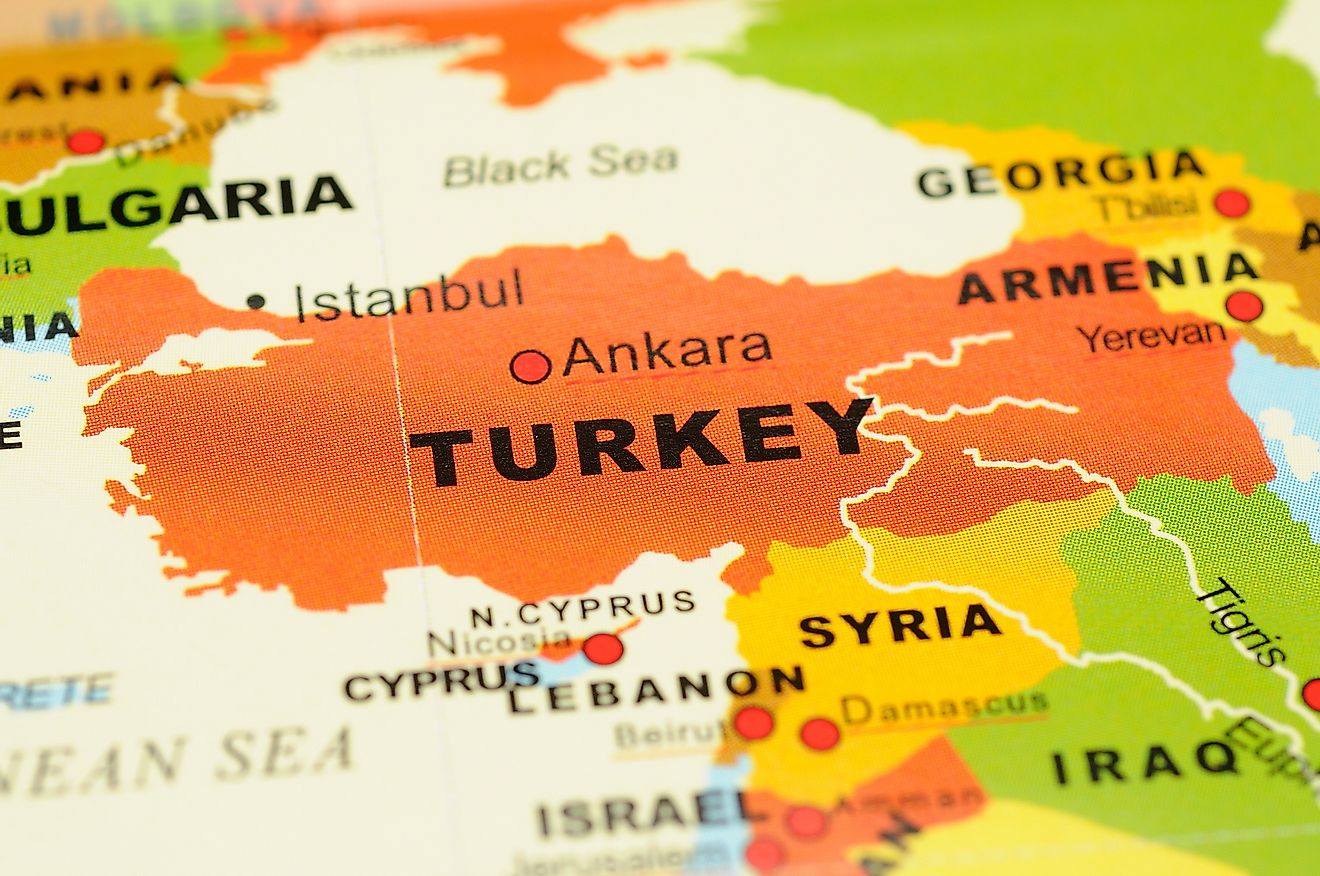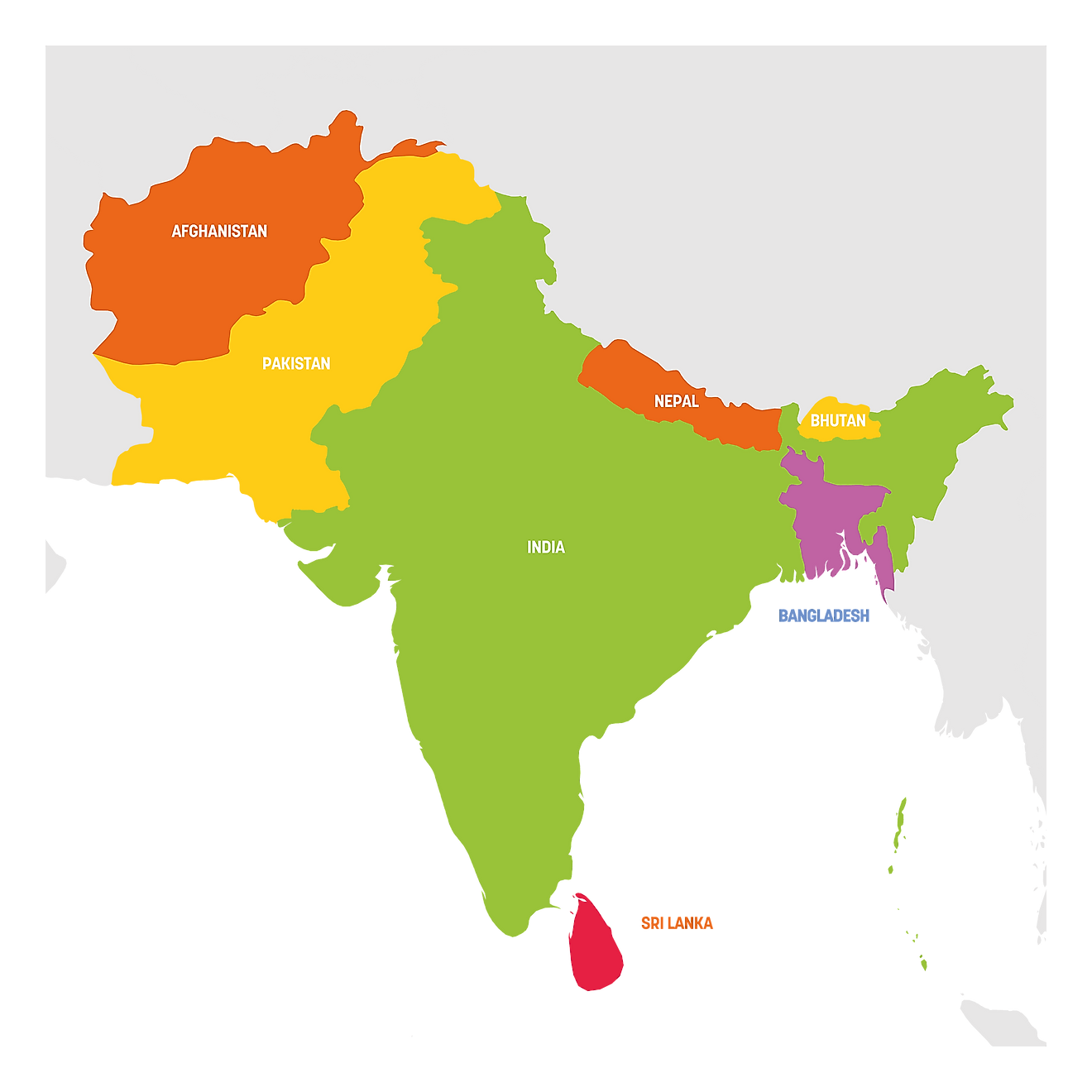How Deep Is The Crater Lake?
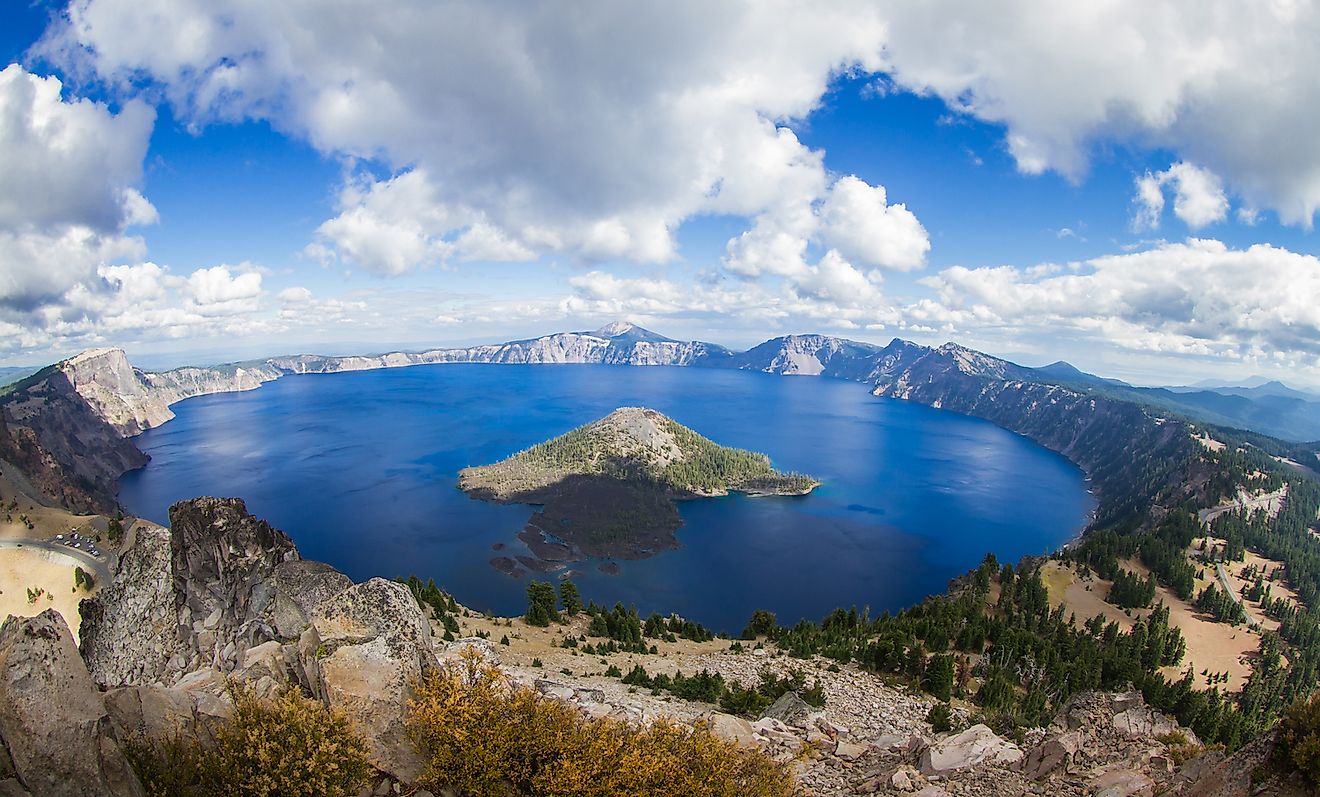
- At its deepest point, Crater Lake clocks in at 1,949 feet (594 meters), making it the deepest lake in the United States and the ninth deepest in the world.
- Because it is not connected to any other water source, Crater Lake is the result of groundwater flow, rainfall, and snowfall.
- Free of sediment and mineral deposits from other bodies of water, Crater Lake is considered one of the cleanest lakes in the world.
Where Is Crater Lake?
Crater Lake is located in the western state of Oregon. It is the main geographical feature of the national park of the same name. Open to the public in 1902, it was originally formed approximately 7600 years ago after Mount Mazama—an active volcano—collapsed on itself. Today, Crater Lake is considered the deepest lake in the United States.
How Deep Is Crater Lake?
The average depth of Crater Lake is 1,148 feet (350 meters), but at its deepest point, it measures a whopping 1,949 feet (594 meters), making it the ninth deepest lake in the entire world. If it were humanly possible to stack the Eiffel Tower, the Washington Monument, and the Statue of Liberty on top of each other, all three could be completely submerged into its cold depths. Crater Lake stretches 20.53 square miles and holds approximately five trillion gallons of water. Nonetheless, it is the second deepest lake in North America, trailing behind Great Slave Lake in Canada by 71 feet (27 meters).
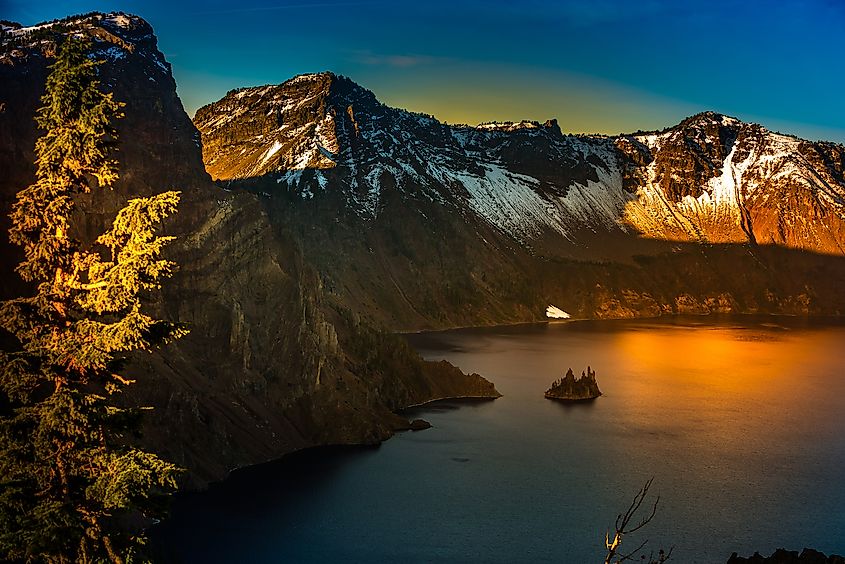
Water Level In The Crater Lake
Crater Lake is unique because it is isolated from all other water sources. In other words, no river flows in or out of the basin. The high water level is largely a result of groundwater flow, rainfall, and snowfall. In fact, Crater Lake is one of the snowiest places in the United States with a yearly average of 43 feet (13 meters) of snow.
However, the water level has not changed much throughout the past hundred or so years. In 1886, a group from the US Geological Survey conducted a test using a lead pipe and piano wire to measure the lake’s depth. After lowering the device into 168 spots, they discovered that at its deepest point it measured 1,994 feet (608 meters). In 1959, a different experiment was conducted and came up with only slightly different results: 1,932 feet (589 meters). And finally, in 2000, Crater Lake’s deepest point clocked in at 1,949 feet (594 meters); this is roughly only a three percent difference from 1886.
With precipitation outpacing evaporation rates by almost double, many scientists have questioned where the extra water goes, but most assume that seepage is responsible for maintaining this natural balance.
Can You Swim In Crater Lake?
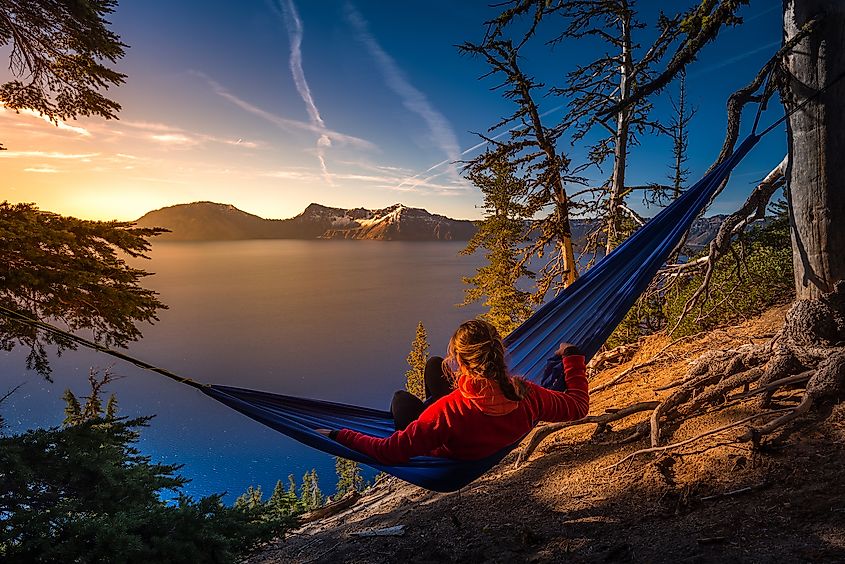
Woman Hiker Relaxing in Hammock Crater Lake National Park, Oregon. Image credit: Kris Wiktor/Shutterstock.com
Most of the lake cannot be accessed for swimming and as per the nps.gov, there is only one place where it is safe to swim in the lake. The 1.1 miles long Cleetwood Cove Trail leads visitors to the lake shore after a nearly 700 ft drop. Visitors can swim in the lake at this area.
Appearance Of The Lake
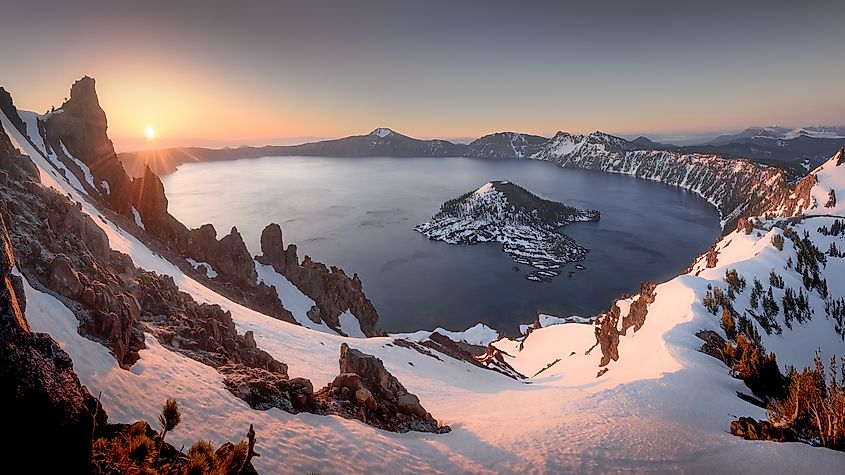
Discovered in 1853, Crater Lake used to be called Deep Blue Lake by early European explorers for its striking blue hue. Because no other water source travels into the lake, it is free of sediment and mineral deposits, granting it a clear, mirrorlike quality. It is also famous for being one of the cleanest lakes in the world. Near the western shore lies Wizard Island, and on the southern, a natural rock pillar called Phantom Ship.
Wildlife
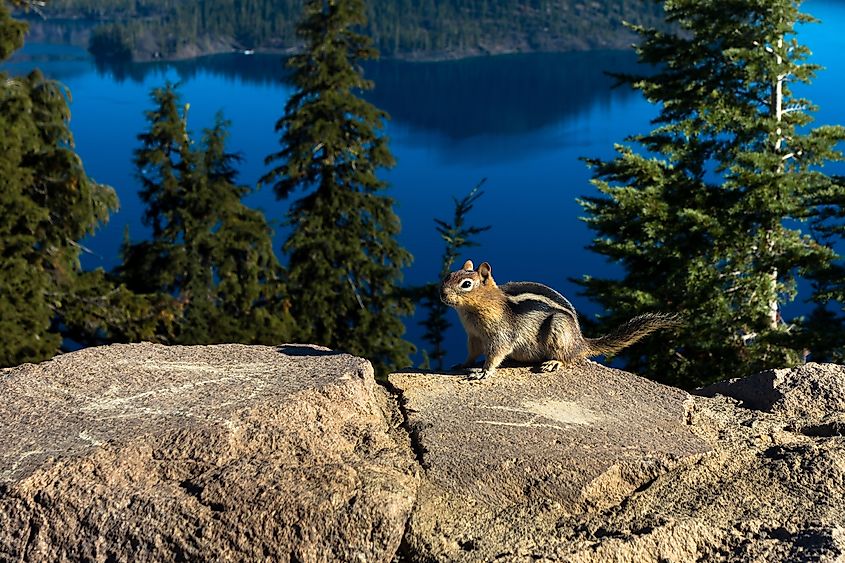
A chipmunk in the Crater Lake National Park. Image credit: Victoria Ditkovsky/Shutterstock.com
Crater Lake is home to some of the most interesting birds in the United States, including the bald eagle, Steller’s jay, and the mountain chickadee. Numerous mammals roam the surrounding area as well: Roosevelt elk, the yellow-bellied marmot, and the American pine marten. However, because it is a contained body of water, the lake initially did not have any fish. They were first brought in at the end of the nineteenth century. Six species flourished for a while, but there are currently only two that still exist: the rainbow trout and the kokanee salmon.
